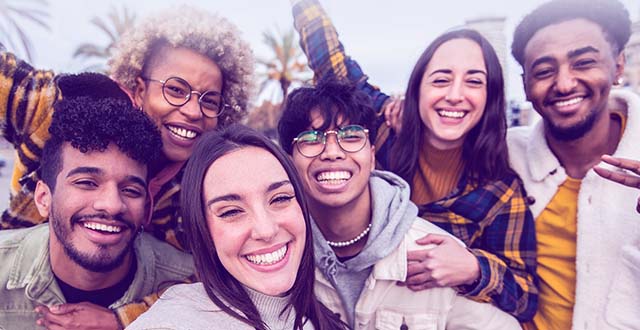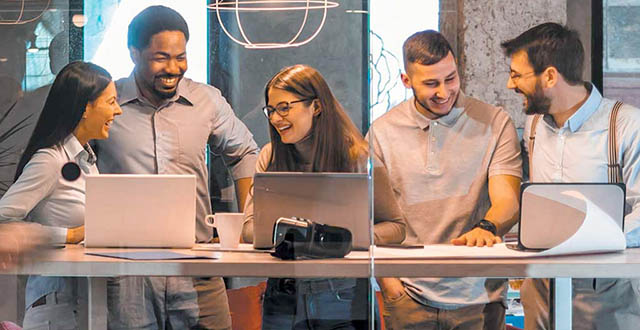Forensic Face Comparison Training – An Essential for Examiners
Safran Identity & Security provides a number of expert software packages for use by forensic professionals. To benefit from Safran’s forensic tools – or any forensic tools – it is essential to understand the forensic evidence that the tools are presenting. As Dr. Nicole Spaun explains in this Evidence Technology Magazine article, there are certain aspects of the face that a forensic professional must understand before using Morpho Face Expert, Morpho Face Detective, or any forensic face comparison software package. MorphoTrak’s forensic face comparison training equips the forensic professional to understand the evidence and to use forensic software packages wisely.
By Dr. Nicole Spaun, MorphoTrak Principal Facial Biometric Expert
The audience is presented with a series of cropped photos. All the subjects are dressed in military camouflage, and the faces are obscured. Can the audience match the pairs? A 100-percent score is rare, because recognizing the matches depends on identifying points of similarity that most people aren’t trained to spot.
Formerly with the FBI and an expert in facial identification, I have used my experience and the recommendations put forth by the Facial Identification Scientific Working Group (FISWG) to develop vendor-independent forensic facial comparison and identification training. I developed and taught the FBI’s first lecture courses on facial identification and today I work with MorphoTrak in training, analysis, and advanced technical research.
Training in forensic face comparison fills an acknowledged gap in the field of computer-aided face recognition and facial identification. Automated face recognition systems are common in both law enforcement and civil applications, yet facial matching software often only presents the reviewer with potential matches. Training for human reviewers has not kept pace with the scope of facial images available from public and private sources: think security cameras in government buildings, schools, and malls, webcams on the street, and social media. In addition, reviewers should be trained to compare faces in different scenarios. One scenario is facial review, where the analyst uses multiple images from a face recognition system to match faces of the same person. Another scenario is facial identification, a forensic one-to-one comparison to be presented in court.
When the object is to identify two faces as being the same face, it may be possible, assuming the availability of high-quality face-front images, to use a facial recognition system in a lights-out manner, accepting the output of the system as a final answer. After all, the pattern matching algorithms used in a typical facial recognition system measure approximately 170 points of interest on a facial image. However, in most cases—particularly those involving uncontrolled surveillance face images—the system should not be used without expert examination.
The question is, where do agencies find the experts? In response to the relatively new science of forensic facial comparison, some agencies assign their deputies, who are familiar with comparing people to their IDs, to the task of facial comparison. Some agencies assign their fingerprint analysts to do double duty, assuming that comparing faces is easier than comparing fingerprints—because we have all been comparing faces since we were born. This is like putting an expensive, multi-function camera in the hands of a person accustomed to using a “point-and-shoot” camera, and expecting the person to take professional photographs. The untrained photographer won’t succeed, because he is unaware of the nuances in the technology and only has a cursory understanding of the underlying principles of image science. The same is true when specialists in an unrelated field are asked to compare facial images for identification: it will be hard for them to succeed because they don’t have the necessary training in properties of the human face and how its appearance changes under imaging conditions.
The training provided in MorphoTrak’s forensic face comparison course is not predicated on the use of any particular facial recognition system. The goal is to train examiners to compare faces in forensic detail whether or not facial recognition software has been used. The course addresses facial review (one-to-many) and facial identification (one-to-one), as well as the history of face comparison, facial anatomy, dermatology, aging and facial alteration, image science and principles of photographic comparison, and image processing.
Being able to compare faces in minute detail is only half the goal of training. The other half is helping the attendees to understand what they are looking at, and that includes how the conditions under which an image has been captured affect the image. Consider, for example, the familiar “fish face” seen in smartphone photos. The rounded features in a close up photo taken on a smartphone might be overlooked as a possible match for a face captured under different conditions. Fortunately, professional imaging software has a fix for “fish face,” and so much more. The course covers a wide range of instructions and best practices about the factors influencing the appearance of an image.
In addition to the exercise with images of military camouflage, I offer an exercise where attendees are coached to prevent impostors from breaching a training session. Attendees are shown how images can be evaluated and peer reviewed, using morphological analysis techniques. The techniques can be used to identify impostors where other methods may be inconclusive. Training closes with a discussion about relevant legal issues and presentation in court. Attendees leave the course well versed not only in forensic face comparison, but prepared to testify in court as to their methods of comparison and their conclusions, if required.
Forensic face comparison is not an alternative to a modern automated facial recognition system, and the process of forensic face comparison cannot replace the speed and capacity for volume that an automated facial recognition system offers. Forensic face comparison and automated facial recognition are two separate and powerful force multipliers that law enforcement agencies can use to identify suspects, impostors, persons of interest, and missing persons. Dr. Nicole Spaun, MorphoTrak Principal Biometric Facial Expert
About the Author
Dr. Nicole Spaun is Principal Facial Biometric Expert for MorphoTrak’s Criminal Justice and Public Security unit. During her tenure at the Federal Bureau of Investigation Digital Evidence Lab, Spaun specialized in photogrammetry and biometrics. To assist the growing facial biometric community, she published numerous papers on techniques and training for the manual comparison of people in images. These efforts culminated in the development and execution of a training program for humans performing facial comparisons. Spaun left the FBI to become the first Biometrics Program Manager for the Headquarters of the United States Army Europe in Germany. There, she supported the use of biometrics for military intelligence and force protection, and worked with foreign nations to build their military and border security biometric capabilities.
This article previously appeared in the Summer issue of Evidence Technology Magazine.



